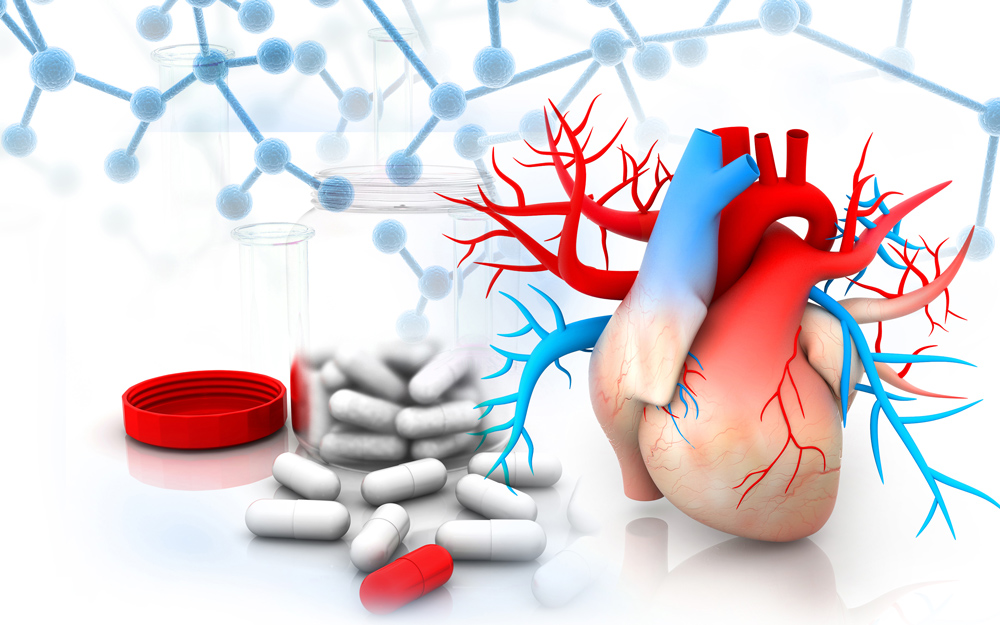Diabetes and Cardiovascular Disease
Cardiovascular disease is the most common cause of death among patients with diabetes
Diabetes negatively affects the body unless controlled and kept within normal range. Doctors and specialists in this field agree that frequent episodes of hypoglycemia and hyperglycemia throughout the years negatively affect many organs and arteries, including the eyes, kidneys, limbs and the heart that is most affected. Some studies suggest that diabetes increases the risk of heart attacks by 70%.
Studies and scientific research indicate that there is a close link between heart disease and diabetes, especially type 2 patients, as most of them suffer from cardiovascular disease, while heart disease is the leading cause of death among patients with diabetes, according to some statistics in this field. 1 in 5 patients with diabetes will have a stroke within 10 years, and the risk of stroke is 2-3 times higher than in non-diabetic patients. The circulatory system allows blood glucose levels to be regulated. The hormone glucagon, carried in the blood, signals the liver to release glucose into the blood and the presence of insulin in the blood instructs the cells to take in glucose from the blood. If blood glucose levels become too high for extended periods of time, damage can be sustained by the blood vessels.
If significant numbers of blood vessels are damaged, this can have a negative effect on the functioning of the body. Where damage is sustained to a significant number of blood vessels in a certain area of the body, diabetic complications will develop. Neuropathy (nerve damage) results from damage to the blood vessels that feed the nerves. Damage to circulation and the nerves in the foot and legs can increase the risks of developing foot ulcers and could lead to amputation. When blood vessels feeding organs are damaged, this can affect performance of the organ. When the kidneys are damaged in this way, they lose their effectiveness in filtering the blood. If the damage continues, it can lead to kidney failure. Each of the complications in diabetes is related to damage to the circulatory system. Diabetes contributes to high blood pressure and is linked with high cholesterol which significantly increases the risk of heart attacks and cardiovascular disease.
Obstruction of vascular function
Atherosclerosis is a form of hardening of the blood vessels, caused by fatty deposits and local tissue reaction in the walls of the arteries. Blood supply beyond the affected parts of the artery is usually compromised by the narrowing and, sometimes, occlusion of the artery. The deposits, called plaques, may rupture with disastrous consequences. Diabetes mellitus is a documented high-risk factor for the development of atherosclerosis. Other complications of diabetes, such as blindness, gangrene and kidney disease, all have some deficiency of blood supply in their genesis.
Atherosclerosis can affect any blood vessel with disastrous effects to the organs supplied by the vessel involved. When it involves the arteries supplying the heart, it leads to Coronary Artery Disease (CAD). This usually results in cases of ischemia or heart attacks. Involvement of other arteries leads to Peripheral Artery Disease (PAD). When it involves the arteries of the brain, the condition can result in strokes. Adequate treatment of diabetes with lifestyle modifications has a highly positive impact, restoring normal function and reducing plaque formation.
Strokes
According to some recent studies, a third of people who suffer from stroke and heart attacks are due to diabetes, 50 percent of amputation cases are also due to diabetes, while 60 percent of dialysis cases are patients with diabetes. High blood sugar levels cause intense thirst, frequent urination, severe hunger, unhealthy weight loss, poor wound healing, etc., especially since patients with diabetes are two to four times more likely to develop stroke compared to healthy adults.
Atherosclerosis
Patients with diabetes have an increased risk of atherosclerosis, because they are more likely to develop hypertension, which leads to a higher risk of coronary heart disease, especially if accompanied by obesity, smoking and lack of exercise and other factors such as high-fat deposits, especially cholesterol, which plays an important role in the damage of the lining of blood vessels.
Silent Ischemia
The problem of ischemia in diabetics is that it occurs silently and the patient does not experience any signs or symptoms. The reason is that diabetes contributes over time to nerve damage so you cannot transmit pain signals from the heart to the nervous system. Studies have shown that damage to the nerves that control heart rate can mean that the heart rate stays high, instead of rising and falling in response to normal body functions and physical activity.
Diabetic myopathy
Diabetes can contribute to heart failure, where the heart muscle becomes more prone to damage and failure for several reasons, including high blood sugar levels and long-term irregularity, which may lead to damage to the arteries, hypertension and atherosclerosis. It is also called myocardial infarction, and appears through its most common symptoms such as dyspnea or swollen legs. It also leads to serious consequences such as acute cardiac arrhythmia or sudden cardiac death.
Coronary heart disease
Coronary heart disease is a condition in which plaque builds up inside the coronary arteries. These arteries supply oxygen-rich blood to the heart. If the flow of oxygen-rich blood to the heart is reduced or blocked, angina or a heart attack may occur. The inner lining of the artery can be damaged due to high cholesterol and triglyceride levels, toxic substances in cigarette smoke, high sugar levels, and other factors in the blood. High blood pressure can also cause damage to the inner lining of an artery. Once the blood vessel is damaged, atherosclerosis begins and a plaque forms.
Prevention is better than cure
It is true that diabetics cannot prevent the disease yet can control it in order to keep it within normal range and avoid severe hypoglycemia and hyperglycemia due to their negative impact on body organs; the patient with diabetes should try as much as possible to control his blood glucose levels nicely by following a calorie-controlled diet or by staying relaxed in order to maintain healthy blood sugar levels and have a healthy heart as well. Moderate diet, exercise and abstaining from smoking are ways to maintain overall health as well as have a healthy heart and controlled diabetes.


















I’m truly enjoying the design and layout of your website.
It’s a very easy on the eyes which makes it much more
enjoyable for me to come here and visit more
often. Did you hire out a developer to create your theme?
Outstanding work!
Happy day to you and your friends.
You sure did a lot of research for this wonderfully written article.
Ηowdy! I’m at work browsing y᧐ur blog from my new iphone!
Just wanted to say I love reading your blog and looҝ forward
to all your posts! Carry on the outstanding worк!
“I really enjoy the article.”
After my Coronary Artery Disease (CAD) diagnoses, I was immediately advised for a coronary angioplasty, then a stent. After a while my condition got worse again with severe shortness of breath and angina, so i started on a natural CORONARY ARTERY DISEASE (CAD) TREATMENT from Herbal Health Point, the herbal treatment was very effective treating my heart condition and the shortness of breath. I had a total decline in symptoms. Go to page w w w. herbalhealthpoint. c o m. Its been 2 years since the treatment, I do lots of walking and lost some weight. My daughter also used their CHF product for her congestive heart failure, very effective.